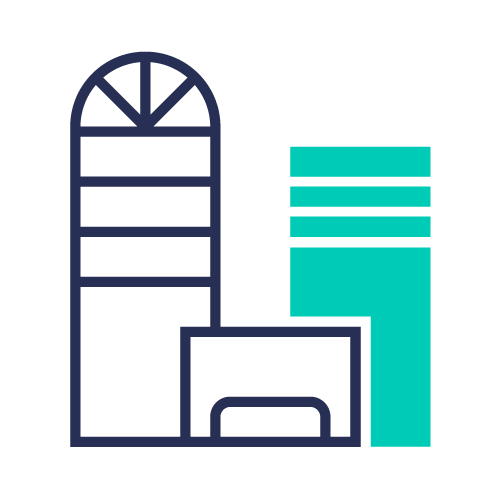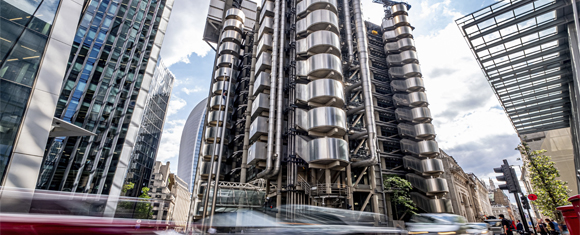Exposing the risks of infectious diseases
From freedom - global travel, social events, and collaboration - to isolation in your own home, the COVID-19 pandemic demonstrated on a world stage the profound impacts of a highly infectious disease.
Infectious disease outbreak
The world has endured infectious disease outbreaks, Spanish Flu, Smallpox, HIV and Ebola to name a few. Our lived experience of highly infectious and harmful diseases reminds us of human fragility and the liberties we take for granted in everyday life. And when we consider that experts say it’s not a question of “if” there will be another pandemic, but “when” and “how severe”[1], we must take the opportunity to use our recent experience to build our resilience to future pandemics.
Factors such as deforestation, agricultural expansion, urbanisation, demographic shifts and climate change, together with increased global interconnectivity, are making us increasingly vulnerable to pandemics. According to the United Nations, between 2000 and 2050, the proportion of world’s population living in urban areas will increase by 46.5% meaning we are living in greater proximity to each other than ever before. Combined with rising “anti-vax” sentiment, “lockdown fatigue”, economic instability, the outbreak of a new infectious disease could have more extensive and lasting consequences than we experienced from COVID-19.
Certain influenza strains and previously unknown emergent infectious diseases, such as a zoonotic, have the potential to be highly infective but also carry a higher risk of mortality or serious symptoms. Alongside trends such as the rise in vaccine scepticism in some quarters in the wake of COVID-19 and growing geopolitical tensions[2], it may be more challenging in future to fight an infectious disease through global vaccination programmes, assuming a vaccine can be developed.
Considering this risk landscape, together we must proactively learn from recent experience and prepare for the possible impacts of another pandemic, with different complexities and variables occurring in the future.
[1] https://www.hsph.harvard.edu/news/features/next-pandemic-not-if-but-when/
[2] https://www.politico.com/news/2023/09/24/anti-vaxxers-political-power-00116527

The value of insurance
Insurance is more than a financial safeguard; it is a critical enabler of resilience and long-term recovery. When a pandemic occurs, the ripple effects can disrupt every facet of society – from healthcare systems, education, travel, to hospitality – causing economies and individual livelihoods to suffer.
The emerging pandemic insurance market offers standalone and specialist insurance covers for new outbreaks of both known and unnamed infectious diseases, providing a spectrum of financial support and protection against the economic impacts of an infectious disease crisis. Some examples include:

Pandemic insurance and preparedness
In a world where the echoes of the COVID-19 pandemic still resonate, readiness is not an option – it is a necessity. Munich Re, in collaboration with International SOS, has introduced a forward-thinking approach to pandemic preparedness which integrates advanced health advisory into a robust insurance and risk financing solution. Once certain triggers have been met, expert and tailored pandemic preparedness advice becomes available, and financial protection is provided through compensation for income reductions from regular business activities; health and safety related extra expenses incurred to comply with regulations; employee retention costs; and liquidity assurance.
Vaccine insurance
The challenge of global vaccination does not end with vaccine development. Distributing billions of doses of cold chain vaccines and pharmaceuticals requires a complex and robust transportation programme that can reach all corners of the globe, regardless of the quality of the local infrastructure. In 2020, Lloyd's Lab alumni Parsyl partnered with the U.S. International Development Finance Corporation to launch the Global Health Risk Facility through their Lloyd’s “Syndicate in a Box”. This initiative provides affordable ‘All Risk’ cargo coverage for the transit and storage of global health products related to COVID-19 and other infectious disease control and prevention programs, with a particular focus on supporting the distribution to developing countries where they are most needed.

Event cancellation insurance
Event cancellation covers incurred costs, or loss of profit because of unforeseeable abandonment, postponement, interruption or cancellation of events during a pandemic. Lloyd’s paid out around £6bn in COVID-19 claims to customers in 2020, with roughly a third of these payouts covering event cancellations – ranging from individual’s weddings to the 2020 Tokyo Olympic Games postponement. In 2021, Lloyd’s partnered with the UK government to launch the £800 million UK Live Events Reinsurance Scheme to provide coverage for the live events sector, which is worth over $70 billion annually and supports more than 700,000 jobs, facilitating the sector’s recovery as lockdown ended.
Find out more about how insurance can help build resilience in the face of future pandemics, and the specialist covers available at the link below.

Picture the scene: Infectious disease spreads unchecked
In a world driven by global connectivity and rapid industrialisation, the very forces that fuel economic growth also create a fertile landscape for infectious diseases. As nations continue to urbanise and economies become more intertwined; demographic shifts, changes in consumption patterns, and the proximity of animal populations to urban centres, make zoonotic diseases, such as coronaviruses and influenzas ever more probable and impactful.
Imagine a scenario where a new and highly lethal pathogen emerges, rapidly escalating into a global pandemic. This disease has a high infection-fatality rate and spreads quickly and widely. The consequences of an infectious outbreak can extend far beyond physical health impacts; behaviour changes due to fear of infection, sheltering practices, or national lockdowns have the potential to drive down global productivity.
This hypothetical scenario demonstrates how a new infectious disease outbreak could evolve into a costly global pandemic:
Contamination
A sickness is detected within a herd on an industrial farm where humans work in close quarters with animals. The herd is immediately quarantined and eventually culled. At the same time, some workers report in sick and are sent home.
Timeframe: Days

Deterioration
The workers’ health deteriorates, and they are hospitalised. Several workers die from a disease that is not currently recognised. Reports of illness showing similar symptoms come from public transport workers, other health workers and members of the workers’ families and friends.
Timeframe: Weeks

Spread
The infectious disease appears to be asymptomatic for the first few days and national and international travel continues as normal, facilitating rapid global transmission. By the time the origin hospital has noticed the beginnings of a potential pandemic, disease vectors are spreading out across the globe.
Timeframe: Weeks

Lockdown
Using lessons learnt from the COVID-19 lockdown, governments act faster and more severely, to clamp down on spread. Fatalities remain high among the populations infected before lockdown and healthcare systems are overwhelmed by the surge of patients. Employee concerns lead to absenteeism in critical sectors such as manufacturing, transportation, and health care, disrupting industrial operations and supply chains.
Timeframe: Months

Prolonged lockdown
The disease is both highly transmissible and extremely virulent and efforts to develop an effective vaccine fail. Governments have no choice but to maintain isolation measures. Public hospitals and access to healthcare become increasingly strained. Without customers, the retail, leisure, travel, and hospitality sectors suffer.
Timeframe: Months to years

Recession
Moderately effective treatments emerge, but despite partially reopening society after a prolonged lockdown, fear prevents many from returning to in-person work. Consumer behaviour shifts significantly, with reduced spending and avoidance of physical stores. Industries dependent on physically present employees, such as manufacturing, transportation and healthcare, suffer lower output. The global economy suffers from reduced GDP and enters a recession. Governments make efforts to stabilise their economies, but a return to normality does not look likely for some time.
Timeframe: Years
The severity of events and impacts
There are two key parameters used to determine the impact of a pandemic, transmissibility, and virulence. Transmissibility is how fast the disease spreads through the population and proportion of people it ultimately infects. Virulence is the severity or harmfulness of the disease to people. There is a trade-off between the two parameters: as virulence increases, more hosts die, people are more cautious and reduce their contact rate, thus reducing the transmissibility or infection rate.
Infectious diseases are not all alike. Some may be very virulent but not easily transmitted; some less virulent but more easily spread. In some instances, we could see an entirely new variant without any effective prevention, treatment, or cure. The type of infectious disease recorded will have an impact on pandemic severity, along with population management protocols, healthcare structure, and more.
| Level | Scenario severity descriptions | Historical reference |
| Major | Localised epidemic of emergent infectious disease: A local outbreak of highly virulent, low transmission disease, such as Ebola, SARS, Avian Flu, leading to new public health measures and local lockdowns. | SARS and MERS |
| Severe | Infectious pandemic: Global pandemic of highly infectious, but moderate virulence virus (with a case fatality rate (CFR) of less than 1%), such as new strain of influenza or infectious coronavirus, causes outbreaks in many countries leading to travel restrictions. Vaccine development scepticism limits the timely recovery from the pandemic | COVID-19 |
| Extreme | Deadly pandemic: A global pandemic from an infectious and highly virulent virus (with a CFR of over 5%), such as a haemorrhagic virus, with outbreaks in many countries leading to travel restrictions. Vaccine development challenges stall the recovery from the pandemic. | None |
Historical references
The scenario has been informed by an analysis of historical events, including:
- 1918 H1N1 influenza pandemic: Following the first world war, an avian-origin influenza pandemic spread worldwide. H1N1 affected around 30% of the global population, leading to the deaths of approximately more than 50 million people[3]. The disease had a higher-than-usual mortality rate in health adults which contributed to the seriousness of the outbreak.
- 2002-2004, SARS outbreak: The SARS outbreak largely affected the Asia Pacific region, causing a substantial cultural change as a result. The efficiency of the response to COVID-19 in these territories is strongly associated with public health policies and practices put in place during SARS and the subsequent MERS outbreaks, and the wide adoption of mask-wearing in the region has been noted since SARS.
- 2019-2023, COVID-19 pandemic: Beginning in late 2019, the outbreak of SARS-CoV-2 spread worldwide causing global disruption and national distress, deaths, and ongoing health concerns after infection referred to as “long COVID”. The World Health Organisation (WHO) estimated approximately 14.9 million human deaths were associated directly or indirectly with the COVID-19 pandemic (measured by excess mortality) between January 2020-31 December 2021[4]. It is estimated that COVID-19 will cost the global economy $12.5 trillion by the end of 2024.[5] In 2023, WHO changed the status of COVID-19 to an “established and ongoing health issue”.[6]
[3] https://www.who.int/news-room/feature-stories/detail/the-burden-of-influenza#:~:text=In%20fact%2C%20more%20people%20died%20due%20to%20the,people%29%20of%20the%20Earth%E2%80%99s%20population%20at%20the%20time.
[4] https://www.un.org/en/desa/149-million-excess-deaths-associated-covid-19-pandemic-2020-and-2021
[5] https://www.reuters.com/business/imf-sees-cost-covid-pandemic-rising-beyond-125-trillion-estimate-2022-01-20/
[6] https://www.who.int/news/item/05-05-2023-statement-on-the-fifteenth-meeting-of-the-international-health-regulations-(2005)-emergency-committee-regarding-the-coronavirus-disease-(covid-19)-pandemic

Scenario effects
The human impacts of this pandemic scenario include the tragic loss of life, potential ongoing physical health problems for survivors, delays to other medical investigations and procedures, and the mental wellbeing strain on society.
From an economic perspective, the impacts would be widespread and primarily driven by disruption across global industries due to local lockdowns and global travel restrictions. Industries dependent on smooth supply chains, in-person operations and face to face interactions would likely be among the hardest hit.
In the “extreme” level of the scenario, global travel would be heavily restricted, and all impacts are exasperated by vaccine development struggles, which slow recovery. The transportation sector is worth 10.4% of global GDP[7], therefore the slow recovery of the aviation, marine and rail sectors poses a potentially significant setback to the global economy. A protracted pandemic could also lead to civil unrest as the public becomes fatigued by severe lockdown measures.
The aftershock of the pandemic could last long after restrictions ease, delaying the return to pre-pandemic normality for several years due to inflation, persistent unemployment and reduced consumer spending.
Explore the impact of an infectious disease outbreak
The economic impact
The role of insurance
Disclaimer
This report has been produced by Lloyd's Futureset and Cambridge Centre for Risk Studies for general information purposes only.
While care has been taken in gathering the data and preparing the report Lloyd's and Cambridge Centre for Risk Studies do not, severally or jointly, make any representations or warranties on behalf of themselves or others as to its accuracy or completeness and expressly exclude to the maximum extent permitted by law all those that might otherwise be implied.
Lloyd's and Cambridge Centre for Risk Studies accept no responsibility or liability for any loss or damage of any nature occasioned to any person as a result of acting or refraining from acting as a result of, or in reliance on, any statement, fact, figure or expression of opinion or belief contained in this report. This report does not constitute advice of any kind.
Note that this report does not seek to replace or inform any of the mandatory scenarios which Lloyd’s publishes to support the Realistic Disaster Scenario exercises managing agents are required to undertake in respect of the syndicates managed by them.






